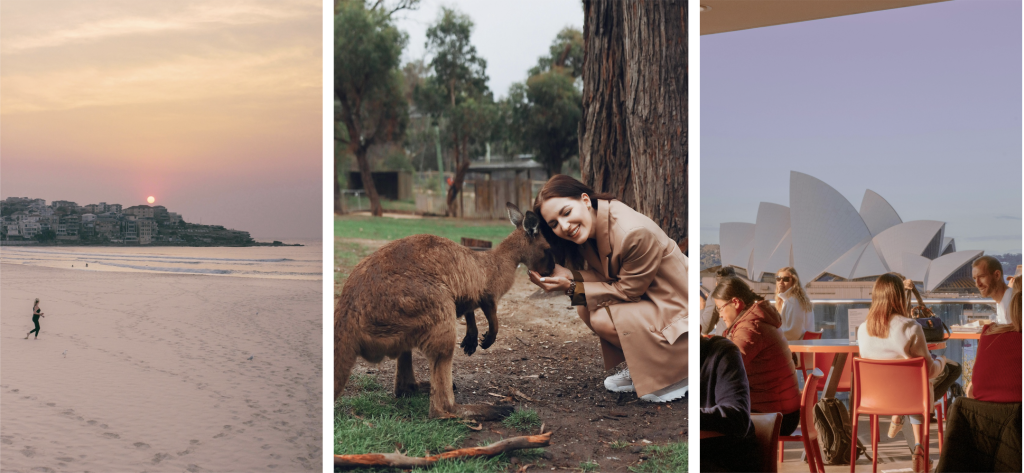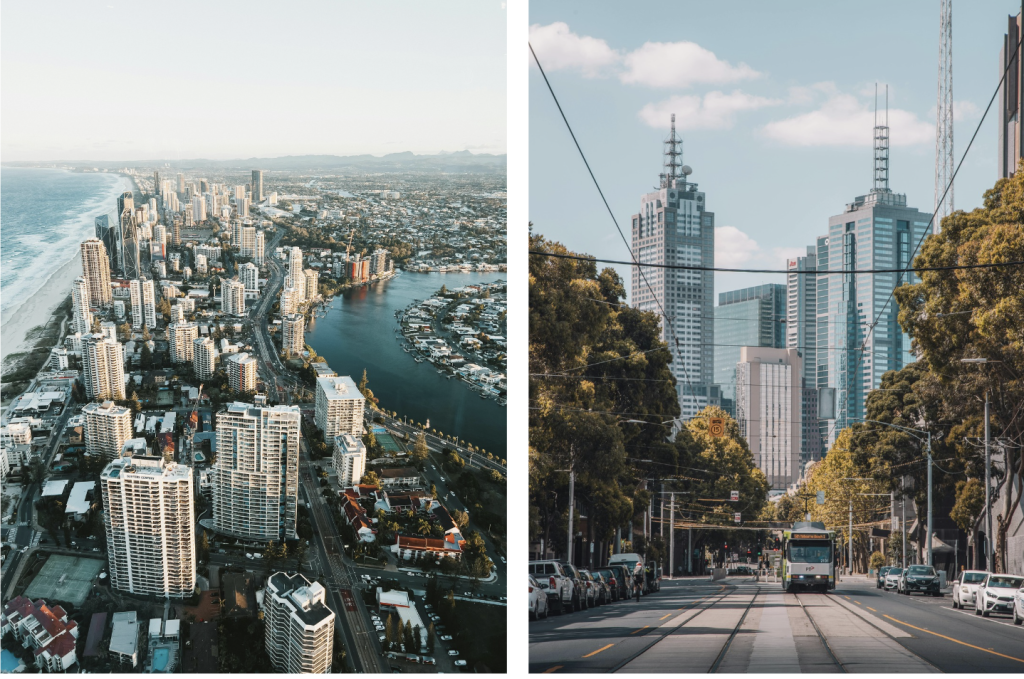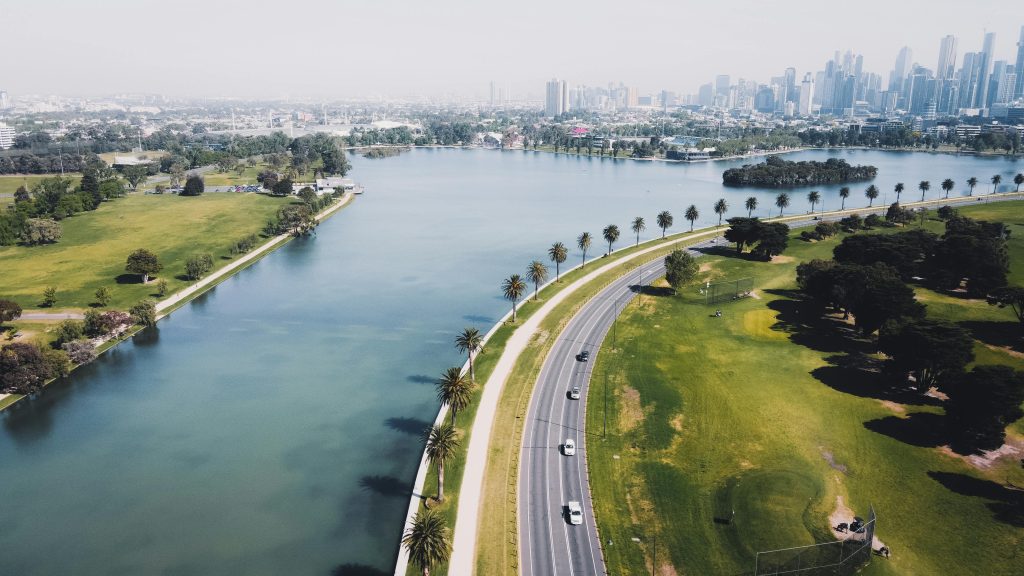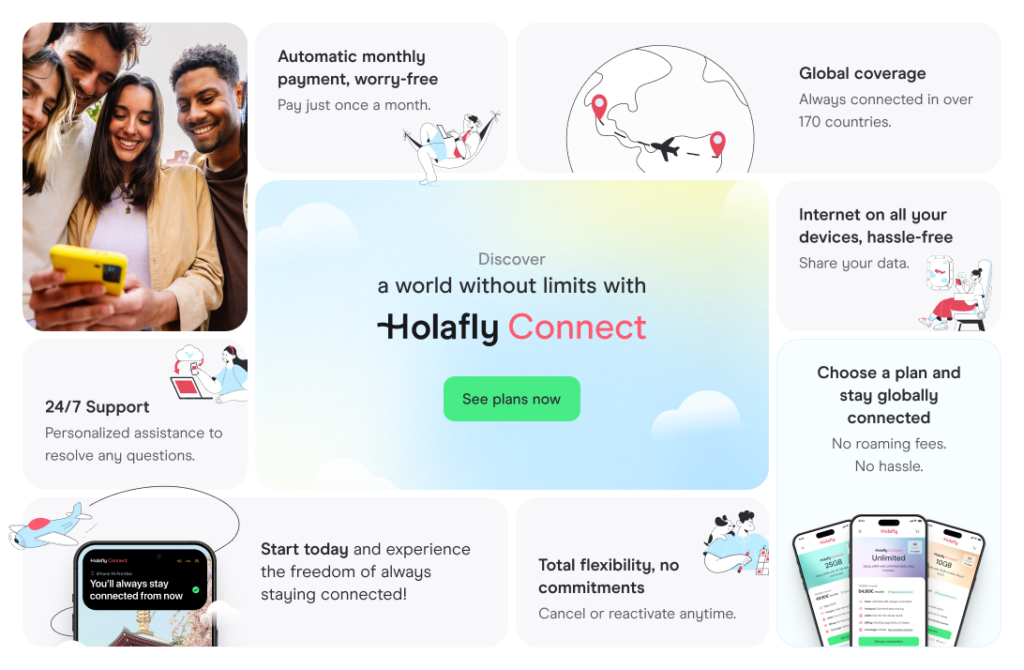How to Get the Digital Nomad Visa for Australia in 2025: Step-by-Step Guide
Find out about the alternatives to the Australian digital nomad visa with our guide for remote workers and freelancers.
If you are thinking of choosing Australia as your destination country to experience the oceanic continent, read on for our guide to the Australia Digital Nomad Visa. The English-speaking country has positioned itself as an ideal destination for digital nomads thanks to its high quality of life, booming technology ecosystem and robust network of services that support remote working. If you are a professional who can work from anywhere in the world, Australia offers you the opportunity to enjoy its stunning nature, dynamic economy and diverse mix of cultures, while maintaining your job or freelance business.
In this article, we will explain in detail the visa options you can consider as a digital nomad in Australia, how to apply for them, the benefits they offer, and answer the most common questions to make your process as simple as possible.

What types of digital nomad visas for Australia allow me to live and work there?
Australia does not yet have a specific visa for digital nomads like some other countries that have developed dedicated programmes to attract remote workers, such as Estonia or Croatia. But don’t be discouraged, as the country offers two alternatives that can perfectly suit the needs of digital nomads who want to work remotely while temporarily living in Australia.
- Working Holiday Visa (subclass 417): One of the main visas that allows you to work and travel at the same time is the Working Holiday Visa. This visa was originally created for young people between 18 and 30 years old (35 in some cases). Providing the opportunity to enjoy an extended stay in Australia while working in temporary employment. Although not specifically designed for digital nomads, many freelancers and remote workers use it to settle in the country for a certain period of time, as it does not impose restrictions on the type of work, as long as the six-month limit with a single Australian employer is met.
- Work and Holiday Visa (subclass 462): Another option is the Work and Holiday Visa which has a similar approach, but with differences in the eligible countries and some additional requirements, such as English proficiency or proof of higher education. These visas allow applicants to work in Australia during their stay, making them viable for digital nomads who work remotely and wish to enjoy the Australian experience without the need to obtain a local job offer.
Although the Working Holiday Visa and the Work and Holiday Visa were not initially created for remote workers, the rise of digital nomadism has made these visas a preferred option for those seeking to combine freelance or remote work with a cultural and living experience in Australia. The COVID-19 pandemic also accelerated the adoption of remote working models around the world, leading many to reconsider their life choices and take advantage of such visas to change their environment while continuing to fulfil their work responsibilities remotely.
The Australian government has been flexible in allowing visa holders to work remotely or as freelancers, as long as they comply with stay and employment regulations. The growing demand for workers in certain industries, such as agriculture and construction, has led many young people to extend their stay in Australia by meeting regional work requirements, allowing them to apply for a second or third visa.
Who is the Working Holiday and Work and Holiday Visa for digital nomads in Australia aimed at?

This type of visa is aimed at young people who want a work and travel experience. In recent years, digital nomads around the world have begun to use them to settle in Australia while continuing to work remotely for employers or clients overseas. While it is not exclusively geared towards digital nomads, the flexibilities it offers make it attractive to this growing segment of the working population.
In other words, while Australia has not yet developed a specific visa for digital nomads, current visa options, such as Working Holiday and Work and Holiday Visas, offer an ideal opportunity for those looking to live temporarily in the country while working remotely. The flexible structure of these visas and the legal backing provided by the Australian government have made Australia a popular destination for digital nomads from around the world.
Features of the Working Holiday and Work and Holiday Visa for digital nomads in Australia
The Working Holiday Visa (subclass 417) and the Work and Holiday Visa (subclass 462) share many features that make them attractive options for digital nomads. Among the main ones, the following stand out:
- Duration: Both visas allow an initial stay of up to 12 months. Holders can extend their stay for up to two or three years, but it is important to note that the conditions include field work in certain fields such as agriculture or construction.
- Employment flexibility: These visas allow holders to work for any employer, albeit with certain restrictions on the duration of employment. Digital nomads working independently for international clients are often not limited by these restrictions.
- Access to services: Holders of these visas have access to Australia’s network of public services, such as the Medicare public health system.
- Ability to study: These visas allow holders to study for up to 4 months during their stay in Australia. This can be an interesting opportunity for those looking to improve their skills while exploring the country.
General requirements and documents for applying for a digital nomad visa in Australia
To be eligible for any of the Working Holiday or Work and Holiday visas, which cost around AUD 635 (Australian dollars), a number of requirements must be met:
- Age: For both subclass 462 and subclass 417, you must be between 18 and 30 years old to apply for one of these visas. And in some countries such as Canada, France and Ireland they can apply for subclass 462 if they are between 18 and 35 years old.
- Nationality: Only citizens of certain countries are eligible for these visas. For example, subclass 417 includes European and North American countries, while subclass 462 includes some Latin American and Asian countries.
- Financial funds: You must demonstrate that you have sufficient funds to support yourself during your initial stay in Australia. This generally translates into having at least AUD 5,000 (Australian dollars) or about USD 3,442.
- Health insurance: Although some visa holders can access the public health system (Medicare), it is advisable to have private health insurance that covers the entire stay.
- Meet health and background requirements: All applicants must pass a medical check and provide criminal record certificates.
- Renewal: In general, you can only obtain this visa once, unless you qualify for a second or third visa by meeting certain work requirements in regional areas.
The documents you must present when applying for one of these visas include:
- Valid passport: Your passport must be valid for the entire period of your stay in Australia.
- Proof of funds: You may be asked for bank statements showing that you have sufficient funds to support yourself at the start of your stay.
- Criminal record certificate: Depending on your country of origin, you may be asked for a certificate showing that you do not have a criminal record.
- Medical documents: Certain medical examinations may be required, depending on the length of your stay and your country of origin.
- Proof of health insurance: You may be required to provide documentation proving that you have adequate health insurance for your stay.

Where can I apply for a digital nomad visa in Australia?
The application process for the Working Holiday Visa (subclass 417) or the Work and Holiday Visa (subclass 462) is done entirely online through the official website of the Australian Department of Immigration and Border Protection. On the portal, you will need to create an ImmiAccount, where you can complete the application form, upload the necessary documents and pay the relevant fees.
The official website is the only place where you should apply for this visa to avoid scams or unnecessary delays. There are also Australian embassies and consulates around the world that can provide additional information or help you with the process, but the process itself must be done online.
Important: If you are a frequent traveler and want to stay connected without worrying about expensive roaming or looking for a new SIM at every destination, Holafly’s subscription plans are for you. With a single eSIM, enjoy internet in more than 170 countries for a fixed price and no surprises on your bill. Travel without limits and connect easily and securely! 🚀🌍

Where can I get tailored advice on the digital nomad visa in Australia?
For many people, the process of applying for a visa can be complex and overwhelming. Especially if you are not familiar with the requirements or the online application platform. In these cases, there are several companies and consultancies that can offer you personalised assistance in your language.
Among the most prominent are Australian registered immigration agencies such as Migration Solutions or Australia Immigration Agency. Their services specialise in offering advice on work and tourist visas, including options for digital nomads. These companies can help you make sure that your application meets all the requirements and provide assistance in case of problems during the process.
- Migration Solutions: Has a multilingual team and offers online consultations for those seeking advice from outside Australia.
- AIA: Australia Immigration Agency, which provides multilingual assistance and specialises in temporary and permanent migration processes.
Frequently asked questions when applying for a digital nomad visa or freelancers for Australia
Currently, Australia does not have a specific visa for digital nomads like other countries such as Estonia or Portugal. However, there are several options that digital nomads can take advantage of to temporarily live in Australia while working remotely. Among the most popular are the Working Holiday Visa (subclass 417) and the Work and Holiday Visa (subclass 462). Both were originally designed for young people who wish to work and travel around Australia for a limited time.
Another interesting option for highly skilled digital nomads is the Global Talent Visa (subclass 858). Aimed at people with outstanding skills in specific fields such as technology, engineering or science.
Both visas allow you to work while travelling in Australia, but have differences in terms of eligible countries and requirements. The Working Holiday Visa (subclass 417) is available to citizens of countries such as the United Kingdom, Canada, France, Germany, among others. And it allows people between 18 and 30 (or 35 in some cases) to apply. On the other hand, the Work and Holiday Visa (subclass 462) is aimed at nationals of countries such as Argentina, Chile, Uruguay, and the United States. It has additional requirements such as a minimum level of education or English language skills.
The application fee for the Working Holiday Visa (subclass 417) and the Work and Holiday Visa (subclass 462) varies slightly, but both are around AUD 635 (Australian dollars). When applying for a visa it is important to bear in mind that this cost may change. It is therefore advisable to check the Australian Department of Immigration website before starting the process.
The processing time for Working Holiday and Work and Holiday visas can vary depending on the time of year and demand. In general, the process takes between 15 and 40 days, but in high demand seasons, such as the months leading up to the Australian summer, it could be extended. It is advisable to apply for a visa well in advance to avoid unexpected delays.
Yes, you can work remotely while in Australia on a Working Holiday Visa or a Work and Holiday Visa. These visas do not impose restrictions on freelance or remote work for employers or clients abroad. If you plan to work for Australian employers, there is a time limitation of up to six months with one employer.
This makes Australia an attractive destination for digital nomads, as they can enjoy the freedom of working online while exploring the country and getting to know its culture.
The Working Holiday Visa (subclass 417) and the Work and Holiday Visa (subclass 462) allow an initial stay of up to 12 months. You can extend your stay in Australia for up to two or three years if you meet certain conditions. To obtain a second visa, you must have worked in regional areas of Australia, performing specific tasks such as agriculture or construction for at least three months. For the third visa, you must have worked for six months in these areas.
In general, you can only obtain a Working Holiday Visa (subclass 417) or Work and Holiday Visa (subclass 462) once. However, if you have met the work requirements in regional areas, you may be eligible to apply for a second or even a third visa. Each subsequent application requires you to demonstrate that you have completed the required regional work during your previous stay.
If your visa expires while you are still in Australia, you must leave the country before this happens. You may also be able to apply for an extension if you meet the requirements.
If you overstay the permitted period without taking action, you could face sanctions such as being banned from returning to Australia for a specified period of time. And the risk that your future visa applications may be refused.
If your visa is about to expire and you wish to remain in Australia, you could apply for a Bridging Visa. This visa allows you to stay in the country legally while a new visa application is being processed.
The Working Holiday Visa (subclass 417) does not require proof of English language proficiency. It is aimed at young people who wish to work and travel in Australia without significant language restrictions. On the other hand, the Work and Holiday Visa (subclass 462) does require applicants to demonstrate basic English language skills. This can be accredited by certificates such as IELTS, TOEFL, or Cambridge, with a minimum score required depending on the test.
One of the main requirements is to demonstrate that you have sufficient funds to support yourself at least for the beginning of your stay. Typically, you need to prove you have at least AUD 5,000 in your bank account. It is recommended you have enough money to buy a return ticket or to demonstrate that you have the means to do so.





 Language
Language 


















 No results found
No results found








